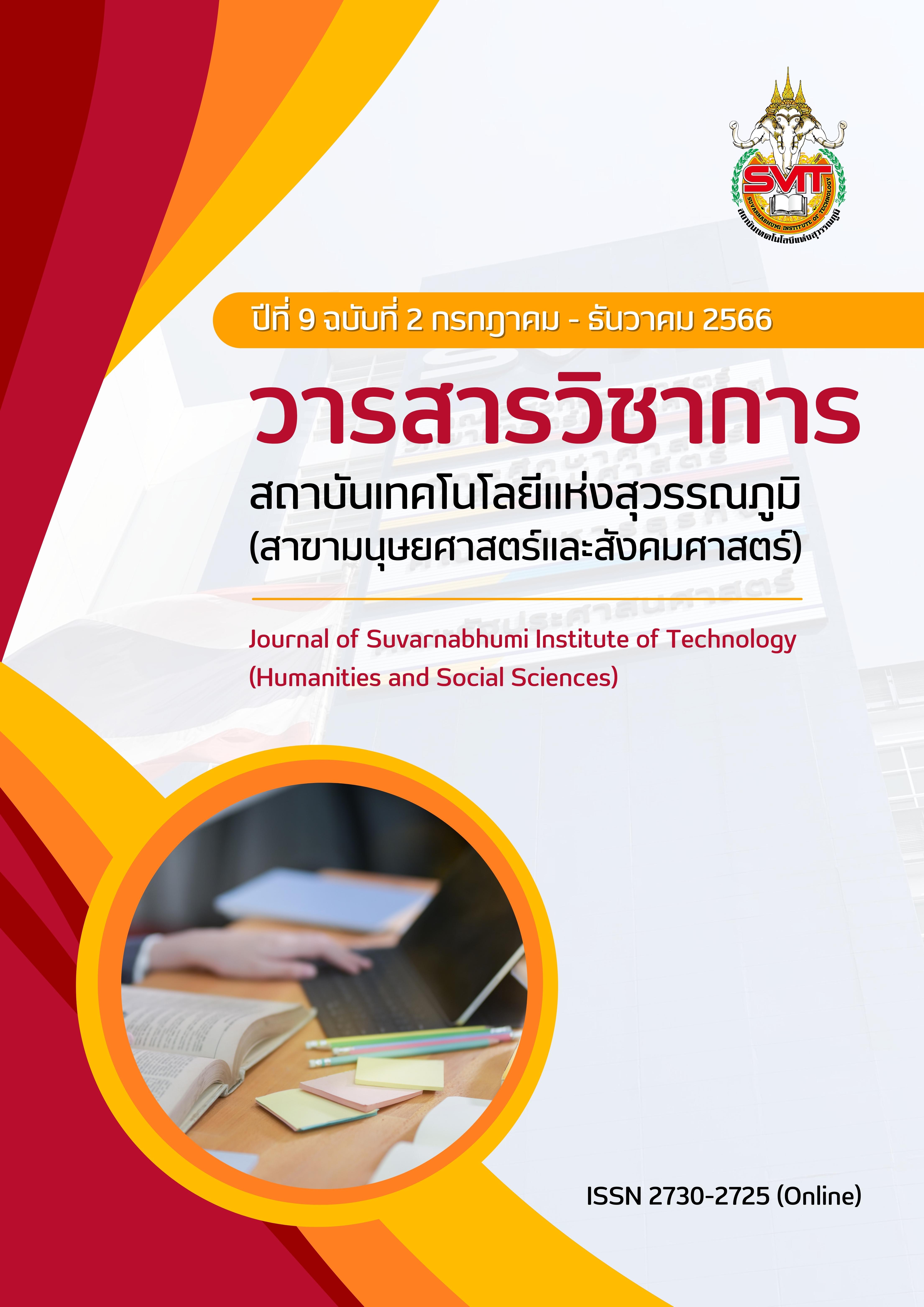INFLUENCING FACTORS OF DATA REUSE INTENTION OF SOCIAL SCIENCE RESEARCHERS: A STRUCTURAL EQUATION MODELING APPROACH
Keywords:
Data Reuse, Intention to Reuse, Data Repository, Structural Equation Modeling, Social ScienceAbstract
This research aims to explore the influencing factors of data reuse intention of 500 social science researchers in Sichuan, China. Based on the theory of planned behavior (TPB), technology acceptance model (TAM), and extended technology acceptance model (ETAM), this study constructs a research model based on information quality, service quality, subjective norms, data repositories, perceived effort, and intention to reuse data. This quantitative study employs sample techniques, using purposive, quota and convenience sampling. Confirmatory Factor Analysis (CFA), and Structural Equation Model (SEM) were used to analyze the data and examine the research hypotheses. Results show that all hypotheses were approved, except the relationship between perceived ease of use and perceived usefulness. In conclusion, all significant factors should be intervened in the early stage of data sharing and reuse to facilitate the smooth development of data sharing and reuse in the later stage.
References
Calisir, F., Altin Gumussoy, C., & Bayram, A. (2009). Predicting the behavioral intention to use enterprise resource planning systems: An exploratory extension of the technology acceptance model. Management Research News, 32(7), 597-613. https://doi.org/10.1108/01409170910965215https://doi.org/10.1108/01409170910965215
Curty, R. G., & Qin, J. (2014). Towards a model for research data reuse behavior: Towards a Model for Research Data Reuse Behavior. Proceedings of the American Society for Information Science and Technology, 51(1), 1-4. https://doi.org/10.1002/meet.2014.14505101072
Fairley, E. (2009). Curated databases in the life sciences: the Edinburgh Mouse Atlas Project. https://www. dcc. Acuk/sites/default/files/documents/publications/casestudies/SCARP_EMAP.pdf.
Faniel, I. M., Kriesberg, A., & Yakel, E. (2016). Social scientists' satisfaction with data reuse. Journal of the Association for Information Science and Technology, 67(6), 1404-1416. https://doi.org/10.1002/asi.23480
Geissbuhler, A., Safran, C., Buchan, I., Bellazzi, R., Labkoff, S., Eilenberg, K., Leese, A., Richardson, C., Mantas, J., Murray, P., & De Moor, G. (2013). Trustworthy reuse of health data: A transnational perspective. International Journal of Medical Informatics, 82(1), 1-9. https://doi.org/10.1016/j.ijmedinf.2012.11.003
Hair, J. F., Black, W. C., Babin, B. J., Anderson, R. E., & Tatham, L. R. (2006). Multivariant Data Analysis (6th ed.). Pearson International Edition.
Hu, L.-T., & Bentler, P. M. (1999). Cutoff criteria for fit indexes in covariance structure analysis: Conventional criteria versus new alternatives. Structural Equation Modeling: A Multidisciplinary Journal, 6(1), 1-55. https://doi.org/10.1080/10705519909540118
Joo, S., Kim, S., & Kim, Y. (2017). An exploratory study of health scientists’ data reuse behaviors Examining attitudinal, social, and resource factors. Journal of Information Management, 69(4), 389-407.
Joo, Y. K., & Kim, Y. (2017). Engineering researchers' data reuse behaviours: a structural equation modelling approach. The Electronic Library, 35(6), 1141-1161. https://doi.org/10.1108/el-08-2016-0163
Kim, Y., & Yoon, A. (2017). Scientists' data reuse behaviors: A multilevel analysis. Journal of the Association for Information Science and Technology, 68(12), 2709-2719. https://doi.org/10.1002/asi.23892
Kim, Y., & Zhang, P. (2015). Understanding data sharing behaviors of STEM researchers: The roles of attitudes, norms, and data repositories. Library & Information Science Research, 37(3), 189-200. https://doi.org/10.1016/j.lisr.2015.04.006
Lancaster University Library. (2022). Lancaster Data Conversations. https://www.lancaster.ac.uk/library/research-data-management/data-conversations/.
Lederer, A. L., Maupin, D. J., Sena, M. P., & Zhuang, Y. (2000). The technology acceptance model and the World Wide Web. Decision Support Systems, 29(3), 269-282. https://doi.org/10.1016/s0167-9236(00)00076-2
Leon, S. (2018). Service mobile apps: a millennial generation perspective. Industrial Management & Data Systems, 118(9), 1837-1860. https://doi.org/10.1108/imds-10-2017-0479
Lim, S., & Duang-Ek-Anong, S. (2021). Determinants of Intention to Use DevOps in Cambodia’s Technology Industry. AU-GSB E-JOURNAL, 14(2), 27-39. https://doi.org/10.14456/augsbejr.2021.12
Lin, H.-F. (2007). Predicting consumer intentions to shop online: An empirical test of competing theories. Electronic Commerce Research and Applications, 6(4), 433-442. https://doi.org/10.1016/j.elerap.2007.02.002
Lv, X. J., & Peng, G. L. (2019). Report on the development of Philosophy and Social Sciences in Sichuan. Comprehensive evaluation of institutions, 1(2), 28-32.
Pronk, T. E. (2019). The Time Efficiency Gain in Sharing and Reuse of Research Data. Data Science Journal, 18. https://doi.org/10.5334/dsj-2019-010
Rotchanakitumnuai, S., & Speece, M. (2009). Modeling electronic service acceptance of an e-securities trading system. Industrial Management & Data Systems, 109(8), 1069-1084. https://doi.org/10.1108/02635570910991300
Rui-Hsin, K., & Lin, C.-T. (2018). The usage intention of e-learning for police education and training. Policing: An International Journal, 41(1), 98-112. https://doi.org/10.1108/pijpsm-10-2016-0157
Schermelleh-Engel, K., & Moosbrugger, H. (2003). Evaluating the Fit of Structural Equation Models: Tests of Significance and Descriptive Goodness-of-Fit Measures. Methods of Psychological Research Online, 8, 23-74.
So, J. C. F., & Bolloju, N. (2005). Explaining the intentions to share and reuse knowledge in the context of IT service operations. Journal of Knowledge Management, 9(6), 30-41. https://doi.org/10.1108/13673270510629945
Wang, K., & Lin, C. L. (2012). The adoption of mobile value-added services: investigating the influence of IS quality and perceived playfulness. Managing Service Quality, 22(2), 184-208.
Xie, Q., Song, W., Peng, X., & Shabbir, M. (2017). Predictors for e-government adoption: integrating TAM, TPB, trust and perceived risk. The Electronic Library, 35(1), 2-20. https://doi.org/10.1108/el-08-2015-0141
Yoon, A., & Kim, Y. (2017). Social scientists' data reuse behaviors: Exploring the roles of attitudinal beliefs, attitudes, norms, and data repositories. Library & Information Science Research, 39(3), 224-233. https://doi.org/10.1016/j.lisr.2017.07.008
Yoon, A., & Kim, Y. (2020). The role of data-reuse experience in biological scientists' data sharing: an empirical analysis. The Electronic Library, 38(1), 186-208. https://doi.org/10.1108/el-06-2019-0146
Zhou, T. (2011). Examining the critical success factors of mobile website adoption. Online Information Review, 35(4), 636-652. https://doi.org/10.1108/14684521111161972
Downloads
Published
Issue
Section
License
Copyright (c) 2023 Suvarnabhumi Institute of Technology

This work is licensed under a Creative Commons Attribution-NonCommercial-NoDerivatives 4.0 International License.
บทความที่ได้รับการตีพิมพ์เป็นลิขสิทธิ์ของวารสารวิชาการ สถาบันเทคโนโลยีแห่งสุวรรณภูมิ
ข้อความที่ปรากฏในบทความแต่ละเรื่องในวารสารวิชาการเล่มนี้เป็นความคิดเห็นส่วนตัวของผู้เขียนแต่ละท่านไม่เกี่ยวข้องกับสถาบันเทคโนโลยีแห่งสุวรรณภูมิ และคณาจารย์ท่านอื่นๆในสถาบันฯ แต่อย่างใด ความรับผิดชอบองค์ประกอบทั้งหมดของบทความแต่ละเรื่องเป็นของผู้เขียนแต่ละท่าน หากมีความผิดพลาดใดๆ ผู้เขียนแต่ละท่านจะรับผิดชอบบทความของตนเองแต่ผู้เดียว





